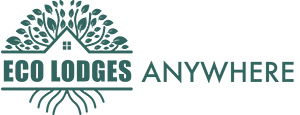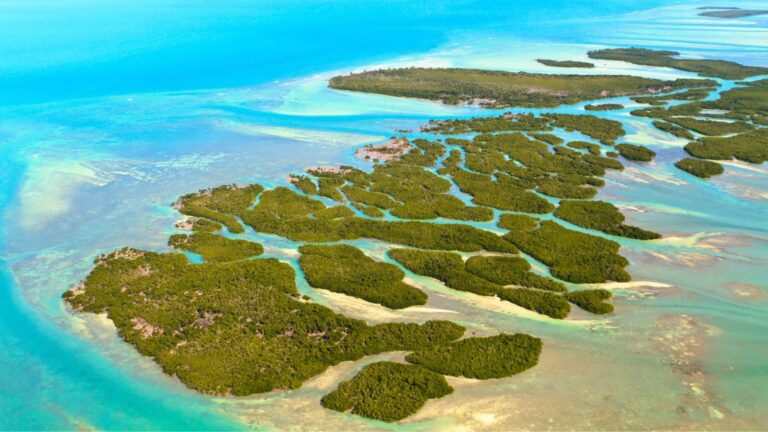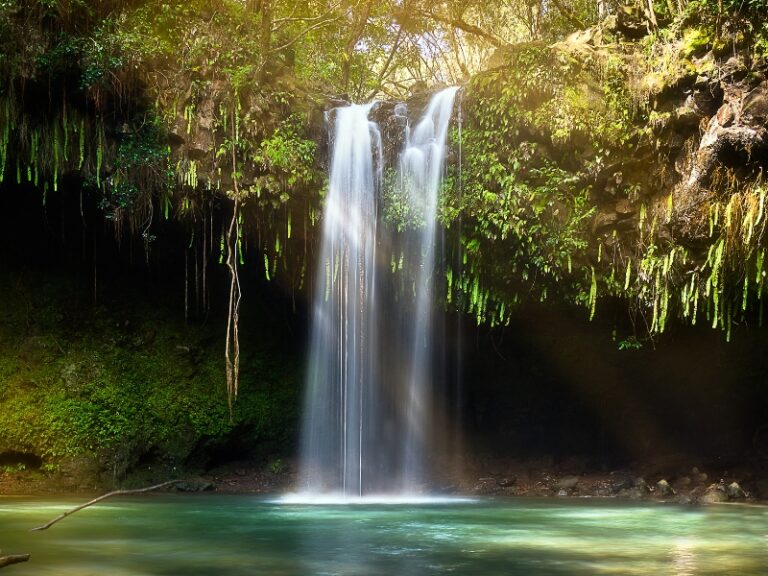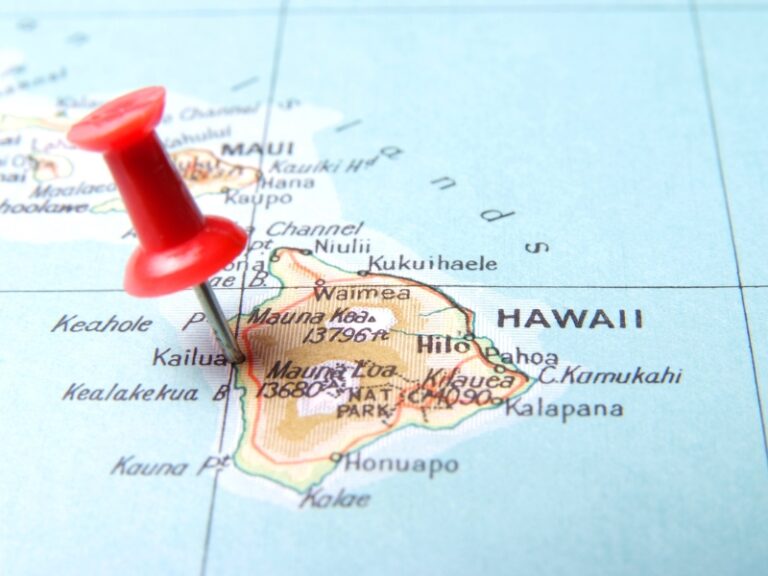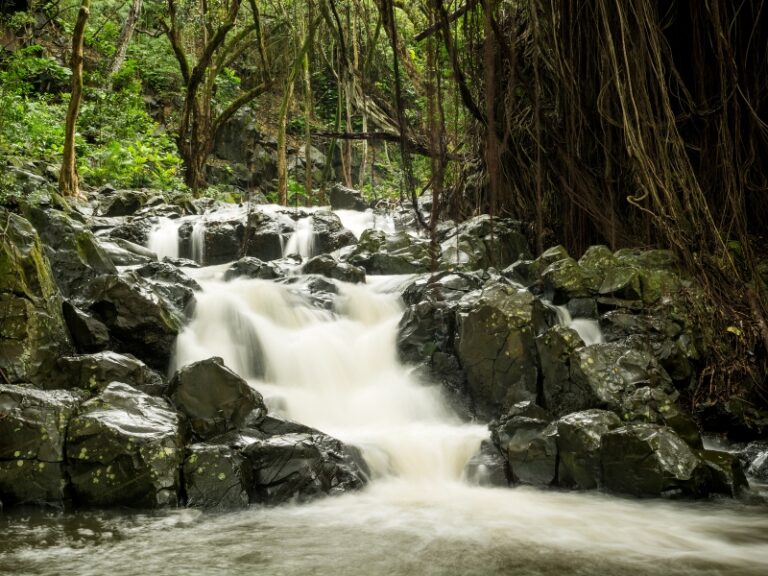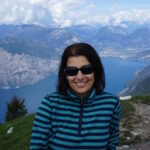Best Time to Visit Hawaii (All Seasons Explained!)
Hawaii is a premier travel destination known for its idyllic climate and stunning natural beauty. Travelers seeking the best time to visit Hawaii should consider weather patterns, tourist traffic, and cost. The islands offer a warm tropical climate year-round, making it a getaway for any season. However, nuances in Hawaii’s weather and the varying high and low tourist seasons can influence the timing of a visit.
But guess what, February and September is the best time to visit Hawaii. Why? These months welcome the least visitors; the temperature is still warm, but the rainfall is moderate. They are also considered off-season, so prices may be more budget-friendly.
*This post may contain affiliate links. We may receive a commission if you make a purchase through those links. Please read our disclosure.
- Save 80% on flights -> FareDrop – check out all Hawaii airports
- Useful guides → Eco-friendly things to do in Hawaii
- Where to Stay → Most sustainable eco-lodges in Hawaii
- Luxury – Hawaii Island Retreat at Ahu Pohaku Ho’omaluhia
- Eco B&B – Beautiful Edge of the World
- Agrotourism – Puu O Hoku
- Budget – Hawaii Sanctuary
Hawaii Weather and Climate
Hawaii is situated in the middle of the Pacific Ocean, approximately 2,400 miles from the Mainland U.S. According to the Köpper-Geiger classification you can expect the following climate per region depending on altitude:
- Tropical rainforest, tropical monsoon, and tropical savanna is along the coast on most of the islands. It is the typical tropical climate, with rainy and dry seasons taking turns. Tropical rainforest means no dry season. Tropical monsoon is a bit rainier, and tropical savanna is a bit drier. Most of Oahu, Kauai, and Molokai falls in this climate while other islands only partially.
- Oceanic is characterized by mild temperatures with a narrow annual temperature range and no extreme seasonal temperatures. This climate type also features ample precipitation distributed fairly evenly throughout the year, without a distinct dry season. A large part of Maui and Hawaii Big Island belongs to this climate.
- Dry arid (desert) and semi-arid (steppe) climates are distinguished by low annual precipitation. They receive very little rainfall, leading to sparse vegetation. The Northern part of Hawaii’s Big Island right along the coastal areas, the Southwest coast of Maui, and the island of Kaho’Olawe experience this climate.
- Temperate – Mediterranean climate has mild, wet winters and warm, dry summers. This climate is typically found on Southern part of Maui but not right along the coast and in the mountain parts of the Big Island.
- Hawaii Big Island even has a tundra climate, on the top of Mauna Kea and Mauna Loa.

Average Temperature
Hawaii’s climate is consistently warm throughout the year. On the islands of Maui, Oahu, Kauai, and the Big Island, temperatures average in the low to mid-80s (Fahrenheit) during the day and in the high 60s to low 70s at night. For those looking to enjoy the warmth, summer months such as July and August tend to be the hottest.

Average Precipitation
Rainfall in Hawaii can differ greatly across each island and even within separate regions of an island. The wet or winter season typically runs from December through February, leading to higher average precipitation. Conversely, the dry or summer season sees less rainfall, particularly in April and May.
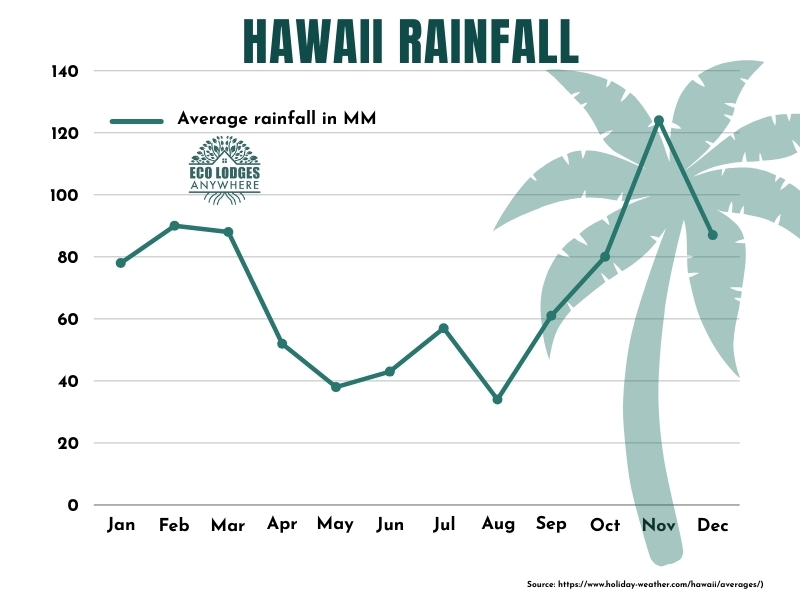
Dry or Summer Season
During Hawaii’s dry summer season, which typically runs from May through September, visitors can expect less rain and more consistent sunny weather. This is an excellent time for surfing and other outdoor activities, as the ocean conditions on many beaches are ideal for water sports.
What to expect during this season?
- Weather: The summer months in Hawaii are marked by warmer temperatures and lower precipitation compared to the wet season. Daytime temperatures often range from the mid-70s to the high 80s Fahrenheit, with humidity levels varying by location. The leeward (Western) sides of the islands experience very little rain, enjoying dry, sunny days ideal for beach activities and outdoor exploration. The windward sides remain greener and might receive occasional showers, but these are usually brief and less frequent.
- Crowds: Summer is a popular time for families to visit Hawaii due to school vacations, leading to higher visitor numbers, especially from mid-June to early August. Popular tourist spots, beaches, and attractions can be crowded.
- Prices: With the surge in tourism, summer often sees elevated prices for airfare, accommodations, and car rentals. Bbooking well in advance can help mitigate costs, but expect overall expenses to be higher than during the shoulder seasons (late spring and early fall).
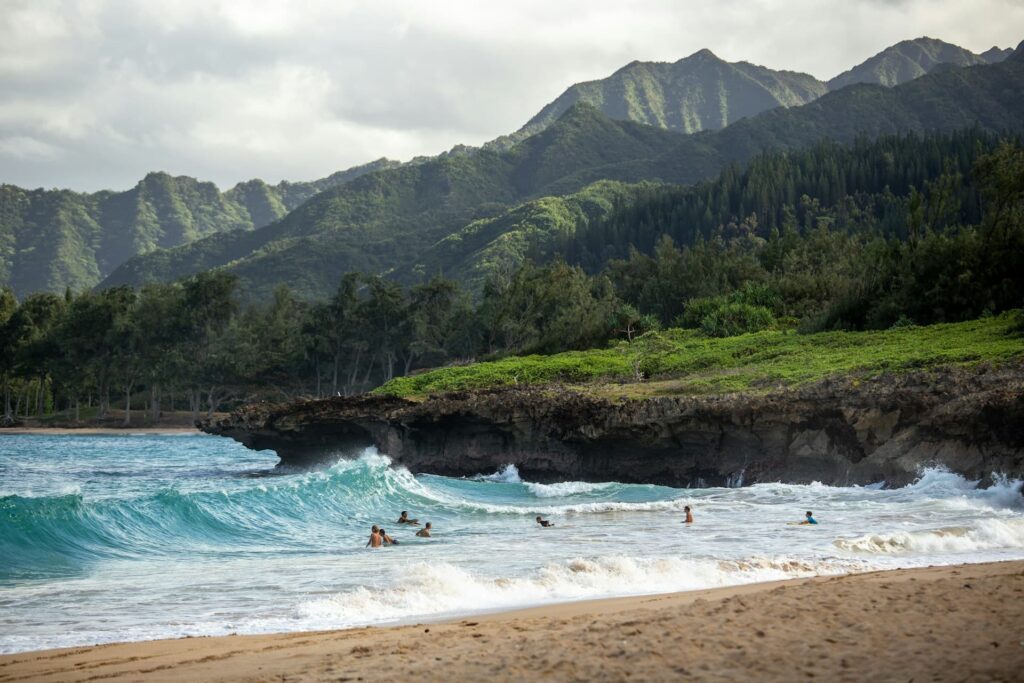
Activities you can do
- Beach Activities: Swimming, sunbathing, beach volleyball, and building sandcastles are perfect during the summer when the weather is at its sunniest and driest.
- Water Sports: Surfing (especially on the South shores where summer swells are common), snorkeling, scuba diving, paddleboarding, and kayaking are excellent due to the clearer and calmer sea conditions.
- Hiking: Exploring the islands’ numerous trails is great in summer due to less rain and muddier conditions. Depending on which island you visit, trails to Kauai waterfalls, Maui waterfalls, Oahu waterfalls or Big Island waterfalls are worth adding to your list.
- Boat Tours: Taking a catamaran cruise or a sunset sail is more enjoyable when the sea is calm.
- Cultural Festivals and Events: Summer is a time for various cultural celebrations, including the King Kamehameha Day Parade and the Prince Lot Hula Festival.
READ ON – Eco-friendly things to do in Hawaii
“We have been to Hawaii during both the summer and fall when rain is more likely. If I had to choose again, I would pick the summer, as we did have 2 straight days of rain in October that impacted our plans. If you can travel the last two weeks of August when most U.S. schools are already back on session, you’ll get both good weather and fewer crowds,” says Monica Fish, former Oahu resident and Founder of Planner at Heart.
Wet or Winter Season
During Hawaii’s wet winter season, which roughly spans from November through March, visitors can experience both brief and localized or longer-lasting rainfall. Despite this, temperatures remain mild and many cultural events and festivals continue to draw visitors, providing a rich experience even amidst the rain. The Aloha Festivals and the Hawaii Food and Wine Festival in fall, and the Honolulu Marathon in December.
What to expect during this season?
- Weather: The wet season brings more frequent rain showers, especially on the windward (Eastern) sides of the islands, which can be quite heavy at times. However, the rain is often localized and intermittent, allowing for sunny periods as well. Temperatures are slightly cooler than in the summer months but still pleasantly warm, typically ranging from the mid-60s to the low 80s Fahrenheit. The ocean temperatures are cooler but still suitable for swimming.
- Crowds: Despite being the wet season, this period coincides with major holidays (Thanksgiving, Christmas, and New Year), often leading to a spike in tourism. Popular destinations and accommodations can be quite crowded, especially around these holidays. However, the increase in visitors varies by island and location, with some areas remaining relatively tranquil.
- Prices: Due to the holiday season and increased demand, prices for flights, accommodations, and some activities can be higher than in the off-peak periods. Early booking is advisable to secure better rates and availability.
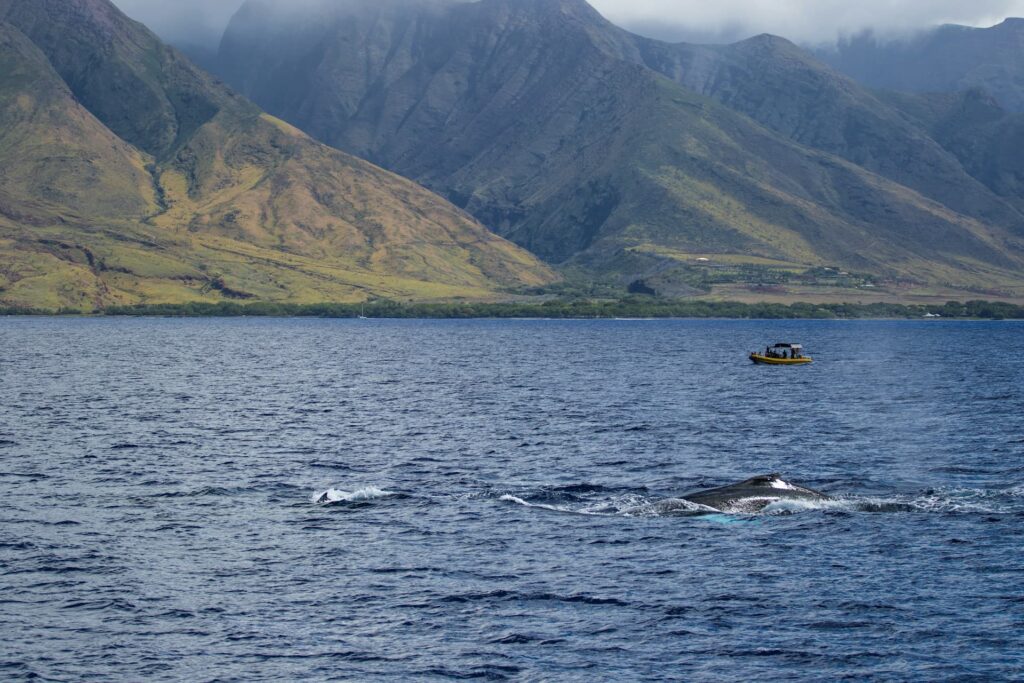
Activities you can do
- Whale watching: The peak season for watching humpback whales in Hawaii is from December through March (January-February is the peak season in Maui) when the whales migrate to Hawaii’s warmer waters.
- Big wave surfing: The North Shore of Oahu and other spots are famous for their big wave surfing in the winter months, not summer, when the swells are much larger and suitable for experienced surfers.
- Snorkeling and diving with manta rays: Although possible in summer, some locations, like the Kona Coast on the Big Island, offer night snorkeling and diving with manta rays year-round, with conditions often being just as favorable or better in winter due to the water dynamics.
READ ON – Eco-friendly things to do in Hawaii
“My husband and I honeymooned in Maui during late January, and it was a wonderful experience. We only experienced rain once, and we spent the rest of the week enjoying outdoor activities without sweating to extensively. I would absolutely go back during that time of the year. The weather wasn’t as bad as we had been told to expect, and we got unexpected bonus if seeing humpback whales on a sightseeing cruise as they come to the area in the winter to give birth before migrating back to Alaska,” says Sarah Gilliland, Managing Travel Editor at Wealth of Geeks and found of On the Road with Sarah.
Shoulder Seasons – less crowded
The shoulder seasons of April, May, September, and October are considered the best times to visit for those looking for affordable accommodations and fewer crowds. During these months, visitors often find better deals on hotels and can experience much of Hawaii’s allure without the peak season volume.
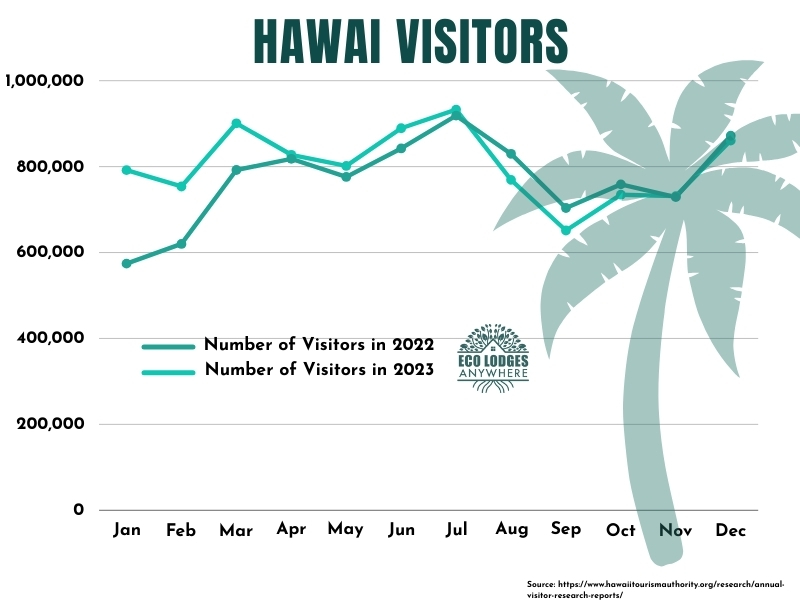
What to expect during this season?
- Weather: These periods offer some of the most pleasant weather conditions in Hawaii, with moderate temperatures and lower rainfall compared to the wet season. Temperatures usually range from the low 70s to the mid-80s Fahrenheit, making it comfortable for a wide range of outdoor activities. The likelihood of rain is reduced, especially in comparison to the winter months, yet the islands remain lush and vibrant from the preceding wetter months.
- Crowds: Shoulder seasons are generally less crowded than the peak travel times of summer and winter holidays. This reduction in tourists translates to quieter beaches, more accessible attractions, and generally a more relaxed atmosphere. It’s an excellent time for visitors seeking a balance between good weather and avoiding the hustle and bustle of peak seasons.
- Prices: With the decrease in demand, prices for flights, accommodations, and activities can be more favorable than during the high seasons. Travelers are more likely to find deals and discounts during these months, making it a cost-effective time to visit. Car rentals, hotels, and tours may offer lower rates to attract visitors in these off-peak periods.
WHERE TO STAY – Eco-lodges in Hawaii
“Spring is one of the best times to visit Hawaii (yes, there are important seasonal differences, one of the things you need to know before visiting Hawaii). You can beat the summer tourist crowds and still catch some warm weather and sunshine. The rainy season typically ends in March, and the trade winds have begun moving in, providing a cool breeze to counteract the heat. The north shore waves have usually calmed, making those beaches more swimmable again,” says Constance Ray, a travel writer at A Well-Read Wanderer, who has lived in Hawaii with her family.
“My husband and I traveled to Hawaii on our honeymoon in the fall season to stay on Oahu. Fall was a great time of year to visit Hawaii. The weather was beautiful and sunny, yet cool enough to wear shorts and a light sweater. The excursion locations weren’t busy. Ocean water was cool, although you’ll still need sunscreen. I’d go back and do it all over again,” says Dr. Rachel Catalano, a travel blogger at The Rx For Travel blog.

Hurricane Season – best to avoid
Lastly, Hawaii’s hurricane season runs from June through November, with the highest risk typically in August and September. Direct hits are rare. The National Weather Service of National Oceanic and Atmospheric Administration (NOAA) lists only 50 hurricanes that impacted Hawaii since 1950. The latest hurricane was Linda in August 2021. However, it is still important to stay informed. Keep an eye on NOAA’s warnings and read their safety tips.
What to expect during this season?
The hurricane season overlaps with both the summer travel peak and the quieter fall months. Early in the season (June to August), tourist numbers are high due to summer vacations, while later in the season (September to November), crowds typically diminish. Prices for accommodations and flights may reflect this pattern, with higher costs in the summer and potentially lower rates in the fall, though this can vary by year and anticipation of weather conditions.
Despite the possibility of hurricanes, many visitors enjoy Hawaii during these months without experiencing any significant weather issues.

Jellyfish season? – all year around
Jellyfishes are living in warm waters and Hawaii’s waters are ideal for them. While they are already all year, high concentration can be observed in 8-10 days after a full moon. The University of Hawaii in collaboration with Waikiki Aquarium publishes a calendar to highlight the probability of box jellyfishes close to south Oahu beaches.
Portugal Man O’Wars are another type of jelly fish with extremely long tentacles. Trade winds carry them to south-facing beaches. Warning signs are posted on the beach if they are a hazard to swimmer and surfers.
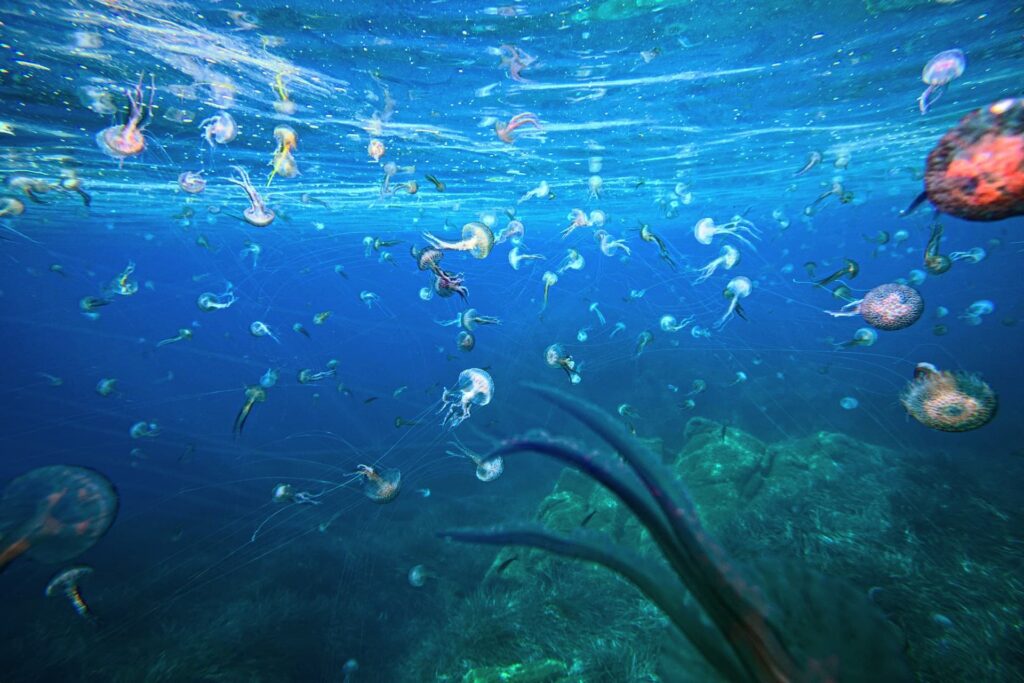
More about Hawaii
Emese Maczko is a travel blogger behind Eco Lodges Anywhere. Having explored several destinations around Europe, the US, Indonesia, and Australia, and resided in Germany, the United Kingdom, and Luxembourg, Emese possesses a keen understanding of diverse cultures and an appreciation for the beauty of each destination she visits. She advocates for sustainable travel and ecotourism.
